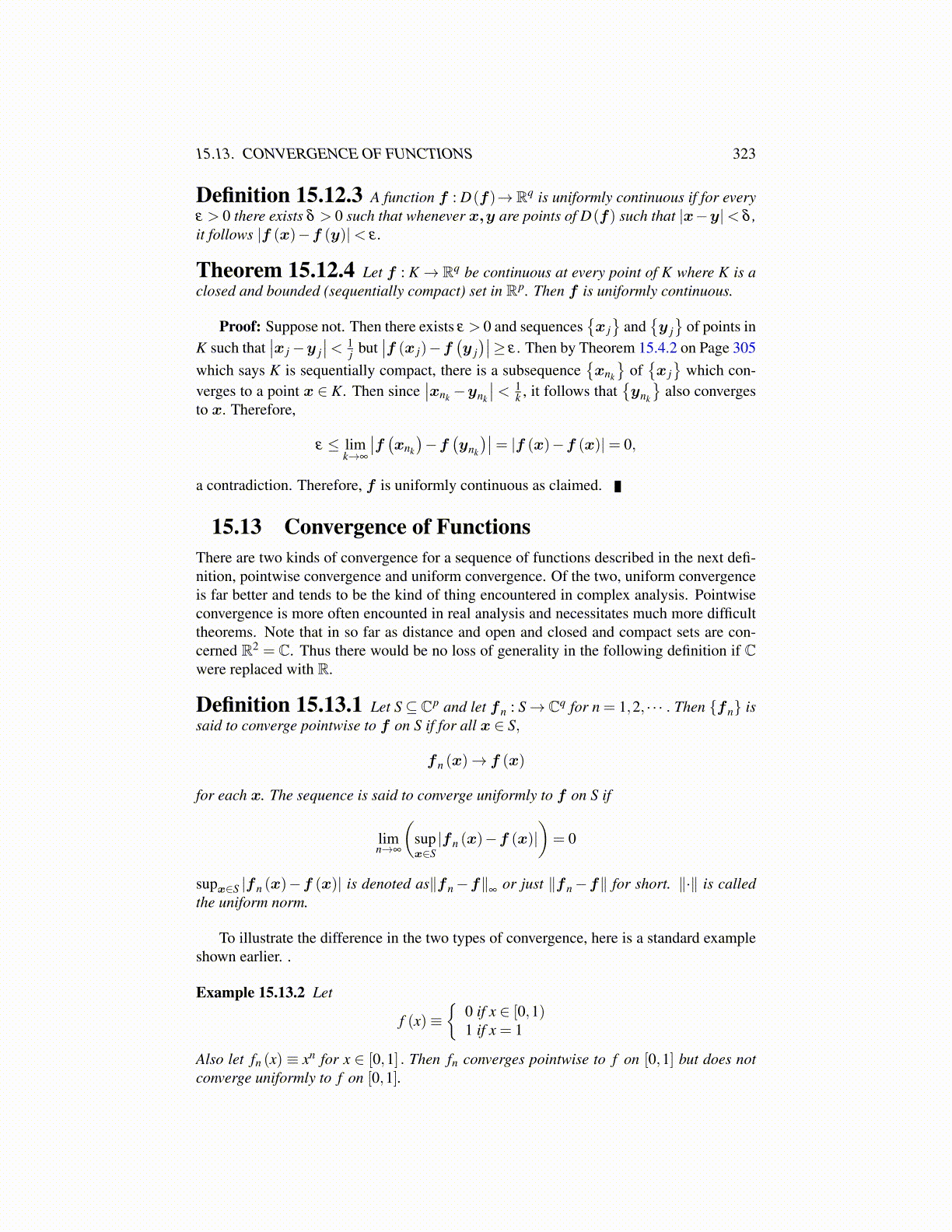
15.13. CONVERGENCE OF FUNCTIONS 323
Definition 15.12.3 A function f : D(f)→ Rq is uniformly continuous if for everyε > 0 there exists δ > 0 such that whenever x,y are points of D(f) such that |x−y|< δ ,it follows |f (x)−f (y)|< ε .
Theorem 15.12.4 Let f : K → Rq be continuous at every point of K where K is aclosed and bounded (sequentially compact) set in Rp. Then f is uniformly continuous.
Proof: Suppose not. Then there exists ε > 0 and sequences{x j}
and{y j}
of points inK such that
∣∣x j −y j∣∣< 1
j but∣∣f (x j)−f
(y j)∣∣≥ ε . Then by Theorem 15.4.2 on Page 313
which says K is sequentially compact, there is a subsequence{xnk
}of{x j}
which con-verges to a point x ∈ K. Then since
∣∣xnk −ynk
∣∣ < 1k , it follows that
{ynk
}also converges
to x. Therefore,
ε ≤ limk→∞
∣∣f (xnk
)−f
(ynk
)∣∣= |f (x)−f (x)|= 0,
a contradiction. Therefore, f is uniformly continuous as claimed.
15.13 Convergence of FunctionsThere are two kinds of convergence for a sequence of functions described in the next defi-nition, pointwise convergence and uniform convergence. Of the two, uniform convergenceis far better and tends to be the kind of thing encountered in complex analysis. Pointwiseconvergence is more often encounted in real analysis and necessitates much more difficulttheorems. Note that in so far as distance and open and closed and compact sets are con-cerned R2 = C. Thus there would be no loss of generality in the following definition if Cwere replaced with R.
Definition 15.13.1 Let S ⊆ Cp and let fn : S → Cq for n = 1,2, · · · . Then {fn} issaid to converge pointwise to f on S if for all x ∈ S,
fn (x)→ f (x)
for each x. The sequence is said to converge uniformly to f on S if
limn→∞
(supx∈S
|fn (x)−f (x)|)= 0
supx∈S |fn (x)−f (x)| is denoted as∥fn −f∥∞
or just ∥fn −f∥ for short. ∥·∥ is calledthe uniform norm.
To illustrate the difference in the two types of convergence, here is a standard exampleshown earlier. .
Example 15.13.2 Let
f (x)≡{
0 if x ∈ [0,1)1 if x = 1
Also let fn (x) ≡ xn for x ∈ [0,1] . Then fn converges pointwise to f on [0,1] but does notconverge uniformly to f on [0,1].